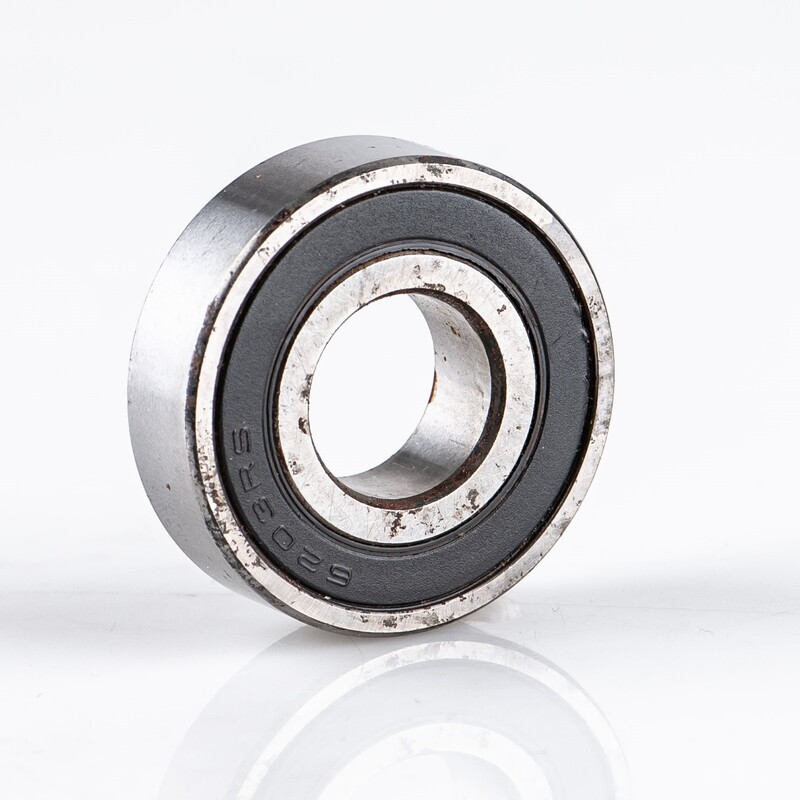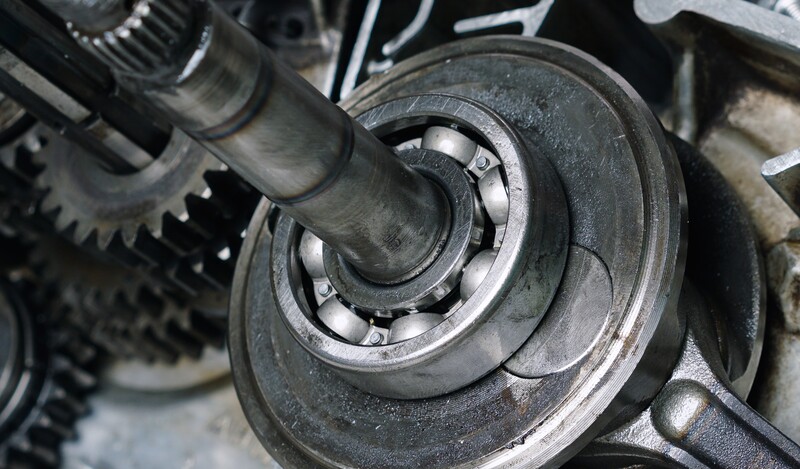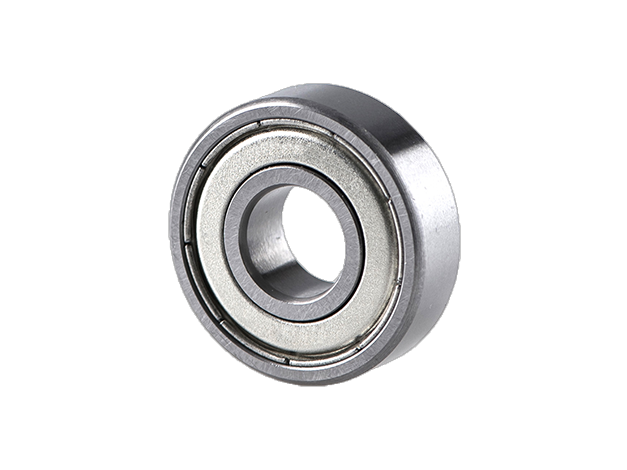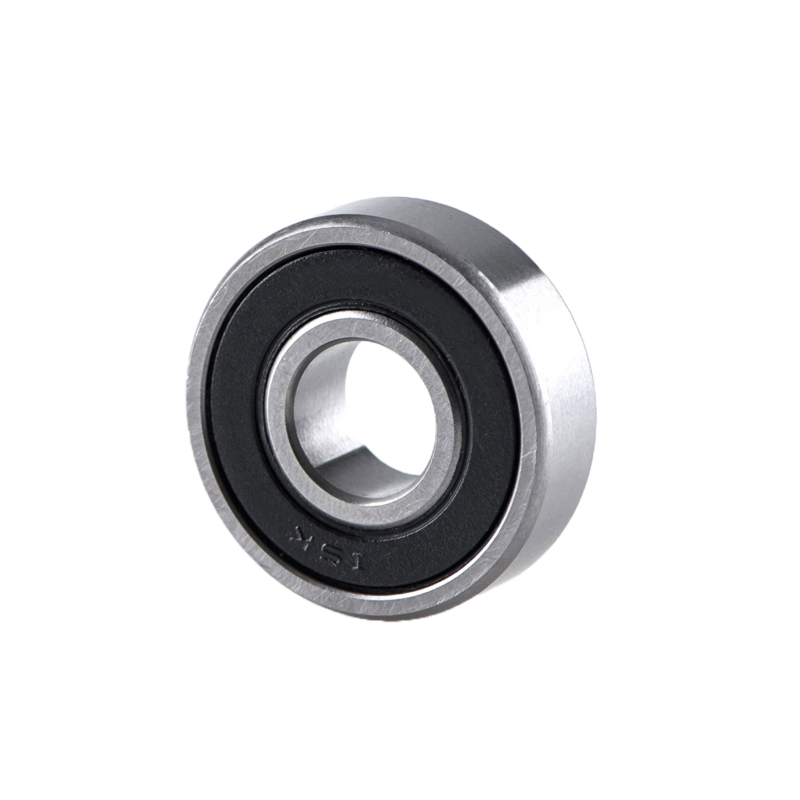Need Support?
Please provide your question. We’ll find you with the best support options.
In the field of mechanical manufacturing, bearings are crucial components. They support rotating parts, ensuring smooth operation of machinery. The choice of materials for bearings is essential for their performance and durability.
In this regard, ceramic bearings and bearing steel are two common choices. Let's look at their nature and differences.
First of all, as far as friction is concerned, ceramic bearings are superior to bearing steel due to their higher roundness, light weight, hardness and smoothness.
This allows ceramic bearings to reduce friction and energy losses, improve equipment operating efficiency, and maintain operating efficiency for a longer period of time.
At the same time, because of its relatively smooth, ceramic bearings do not require a lot of lubrication like steel bearings.
▼2024 Taipei Bicycle Show x ISK BEARINGS: ceramic bearings to feel high rotational speed

Furthermore, corrosion is another significant point of differentiation. Even under perfect lubrication conditions, bearing steel can corrode over time, whereas ceramic bearings do not. In fact, the service life of ceramic hybrid ball bearings regarding corrosion may be up to ten times longer than that of steel bearings.

Additionally, the flexibility of the bearing race is another factor to consider. Ceramic balls have much lower flexibility compared to steel balls, meaning that when considering an upgrade to ceramic bearings, special attention needs to be paid to the loading conditions. Excessive loads or impacts may cause damage to the bearing raceways by ceramic balls, thereby affecting the operation of the spindle.
Conductivity is also an important distinction between steel bearings and ceramic bearings. Ceramic bearings are non-magnetic and non-conductive, making them the preferred choice in applications where conductivity is a concern, such as electric motors controlled by variable frequency drives.
- Wear Resistance: Ceramic bearings are typically made from materials such as aluminum oxide (ZrO2) or silicon nitride (Si3N4). These ceramic materials are harder than steel, thus offering excellent wear resistance.
- Corrosion Resistance: Ceramic materials are less susceptible to corrosion, making ceramic bearings perform exceptionally well in harsh environments such as chemical corrosion or high-temperature conditions.
- Low Lubrication Requirement: Due to the smooth surface and low friction coefficient of ceramics, ceramic bearings typically require less lubrication. This reduces the dependency on lubricants for machine operation and also lowers maintenance costs.
- Reduced Rolling Resistance: Ceramic bearings, being made from ceramic materials, can be manufactured to be more spherical compared to steel bearings. This reduces the resistance during rolling, enhancing the operational efficiency of the machinery.
- Extended Service Life: The hardness of ceramic balls being 3-5 times that of steel balls enables ceramic bearings to withstand greater forces, thereby extending the service life of the bearings.
- Lightweight Design: Ceramic bearings are significantly lighter than steel bearings, with a weight reduction of up to 50%. This is particularly advantageous for applications where weight requirements are high.
 Read More :Explore Ceramic Bearings: Uncover Their Potential in Your Industry
Read More :Explore Ceramic Bearings: Uncover Their Potential in Your Industry

- Widespread Application: Bearing steel is widely utilized in various mechanical equipment. It strikes a good balance between cost and performance and performs well in many application scenarios.
- High Flexibility: Bearing steel exhibits high toughness and elasticity, meaning they can better deform elastically under loads or impacts without easily breaking.
- Cost-effectiveness: Compared to ceramic bearings, steel bearings typically have lower manufacturing costs, making them an ideal choice for many applications.
 Read More:Does the Material of Bicycle Bearings Affect Performance?
Read More:Does the Material of Bicycle Bearings Affect Performance?
%201688.png)
High Strength and Hardness: Bearing steel typically possesses high strength and hardness, allowing it to withstand high loads and high-speed operation while maintaining structural stability.
Good Machinability: Bearing steel is easy to machine and manufacture, enabling the production of various shapes and sizes of bearing components, and it maintains stability during high-precision machining processes.
Cost-effectiveness: Compared to other high-performance materials, bearing steel is generally more cost-effective, making it an economically viable choice for many applications.
 Read More:Chrome Steel vs. Stainless Steel Bearings: Choosing the Best Material for Your Electric Bicycles
Read More:Chrome Steel vs. Stainless Steel Bearings: Choosing the Best Material for Your Electric Bicycles
| Features | Ceramic Bearings | Bearing Steel |
|---|---|---|
| Material | Primarily made from ceramic materials such as zirconia (ZrO2), silicon nitride (Si3N4), etc. | Primarily made from metallic materials like carbon steel or alloy steel |
| Strength | High hardness but higher brittleness | High strength and hardness |
| Coefficient of Friction | Lower, thus reducing energy loss | Higher, may require more lubrication |
| Corrosion Resistance | Higher, less susceptible to corrosion | Lower, requires regular maintenance and corrosion prevention |
| Conductivity | Non-conductive | Conductive |
| Cost | Usually more expensive than bearing steel | Usually more cost-effective |
| Application Scenarios | Extreme environments like high temperature, and corrosion | Widely used in general industrial and mechanical equipment |
Both bearing steel and ceramic bearings have their own advantages and suitable scenarios, and selecting the appropriate bearing material depends on specific application requirements and considerations.
Discover more about the features and applications of various bearings.
Click here to explore more articles and find the perfect bearing for your project.
Needle Bearings (Roller Bearings) are a type of bearing that performs exceptionally well at high speeds. Their rollers are precisely guided by specially shaped, high-rigidity cages with minimal dimensional error. Despite their small cross-section, needle bearings...
How Do Ball Bearings Work? Bearings are often small and unassuming components in a product, yet they are crucial for its proper functioning. Without bearings, many products would fail to operate effectively. But do you know how ball bearings...
Please provide your question. We’ll find you with the best support options.